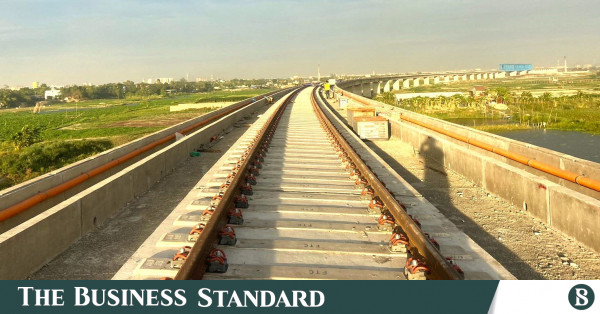Dhaka circular rail project hangs in balance over funding uncertainty


The project, a first-of-its-kind public-private partnership between Bangladesh and South Korea, has remained stalled since 2021 after Korean companies expressed interest in financing only half of the estimated Tk81,000-crore cost
Representational image. Photo: BSS
“>
Representational image. Photo: BSS
The ambitious Dhaka Circular Railway project, which was initiated in 2017 to build an orbital suburban rail system, is facing significant delays due to uncertainty over funding.
The project, a first-of-its-kind public-private partnership between Bangladesh and South Korea, has remained stalled since 2021 after Korean companies expressed interest in financing only half of the estimated Tk81,000-crore cost, according to railway officials.
In 2021, three companies, including Korea National Railways, SK Ecoplant, and GS Engineering and Construction, expressed their interest in investing in the project through the South Korean state-owned company Korea Overseas Infrastructure and Urban Development Corporation.
However, the consortium was interested in investing in half of the project, requiring Bangladesh Railway, which is responsible for its implementation, to secure investors for the remaining portion. Despite reaching out to numerous development partners, no one has yet shown interest in investing in the project.
Infograph: TBS
“>
Infograph: TBS
Md Monirul Islam Firozi, director (engineering) of Bangladesh Railway, told TBS on Sunday, “The existing partners will do half of the project and we are trying to arrange the rest of the amount. So we are now holding meetings with investors and trying to get suitable financiers. But it has made no progress till now.”
When asked why no one was interested in financing and to which companies the railway had approached, he declined to provide any details on it.
However, a railway official, wishing not to be named, told TBS that no investor considered it a feasible project.
Project proposal
Spanning 81 km, with 71 km elevated and 10 km underground, the network will comprise 24 stations, 12 of which will be interchanging, facilitating connectivity with other modes of transport such as MRT, BRT, and subway, according to the project proposal.
The proposed interchanging stations include Purbachal North, Adamjee, Chittaranjan, Fatullah, Pagla, Postogola, Kamrangirchar, Rayerbazar, Dhaka Zoo South, Dhaka Zoo, Uttara and Biswa Ijtema.
Other stations include Tongi, Trimukh, Purbachal, Beraid, Trimohoni, Demra, Siddhirganj, Chashara, Jhilmil, Sadarghat, Mohammadpur, Gabtoli and Dhour.
The rail line will feature standard gauge tracks, a 1,500-volt DC electric system, and a maximum speed of 120 km per hour, operating under the Communication Based Train Control System signalling system.
Feasibility studies for the project were conducted twice — in 2018 and in 2021 — along with a conceptual design, highlighting the proposed railway line’s features.
Experts see potentials
Md Shamsul Hoque, a transport expert and professor at the Bangladesh University of Engineering and Technology (BUET), told TBS, “Circular rail systems, common in developed nations, hold the promise of efficiently transporting commuters living on the outskirts of cities. However, the current project lacks integration, with multiple initiatives along the same alignment lacking coordination.”
He emphasised the necessity of mature plans for such a venture and said, “Otherwise, economic returns would be minimal.”
Echoing the same, Md Hadiuzzaman, also a BUET professor in civil engineering, emphasised the project’s potential while cautioning against fragmented implementations.
He also added that the high budget allocation must align logically with the project’s success criteria to avoid negative outcomes.
Uncertainty
Bangladesh Railway officials have expressed uncertainty regarding the project’s implementation.
Bangladesh Railway Secretary Mohammad Humayun Kabir told TBS, “The progress of the project is very slow, and it is still in the initial stages. While we remain optimistic, the current situation indicates that we need to reconsider the implementation.”



